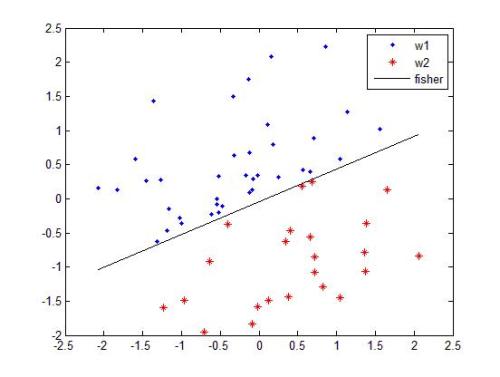Linear classifiers with random convolution kernels are computationally efficient methods that need no design or domain knowledge. Unlike deep neural networks, there is no need to hand-craft a network architecture; the kernels are randomly generated and only the linear classifier needs training. A recently proposed method, RandOm Convolutional KErnel Transforms (ROCKETs), has shown high accuracy across a range of time-series data sets. Here we propose a multi-scale version of this method, using both high- and low-frequency components. We apply our methods to inter-burst detection in a cohort of preterm EEG recorded from 36 neonates <30 weeks gestational age. Two features from the convolution of 10,000 random kernels are combined using ridge regression. The proposed multi-scale ROCKET method out-performs the method without scale: median (interquartile range, IQR) Matthews correlation coefficient (MCC) of 0.859 (0.815 to 0.874) for multi-scale versus 0.841 (0.807 to 0.865) without scale, p<0.001. The proposed method lags behind an existing feature-based machine learning method developed with deep domain knowledge, but is fast to train and can quickly set an initial baseline threshold of performance for generic and biomedical time-series classification.
翻译:带有随机卷变内核的线性分类器(ROCKETs)在一系列时间序列数据集中显示出很高的准确性。 我们在这里建议使用高频和低频组件来计算这种方法的多尺度版本。 我们采用的方法是在36个Neartates < 30周的妊娠年龄中进行预发EEEG的组别中进行预爆检测。 10 000个随机内核的演进使用峰值回归合并了1万个随机内核的演进的两个特征。 拟议的多尺度ROCKET方法在一系列时间序列数据集中超越了这一方法: 中位( 内径范围、 IQR) 马修相关系数为0. 815至0.874, 多尺度为0.841至0.807至0.865。 我们采用的方法,在一组从36个Negnates < 30周的预产期前 EEEG 妊娠年龄中进行预爆检测,不需要进行预爆; 10 000个随机内核变的内核变的内核变(ROCETsulational commal graphal press legy) press rode rolegy a pract rolegy a rolegrolegroduism prism smamammmal maismaisma 一种基础和一种快速学习一种基础方法, 底制制制一种基础方法可以制制制制制制制制制制制制制制制制制制制制制制制一种基础模型制制制制制制制制制制制制制制式的模型基底基底模方法。



